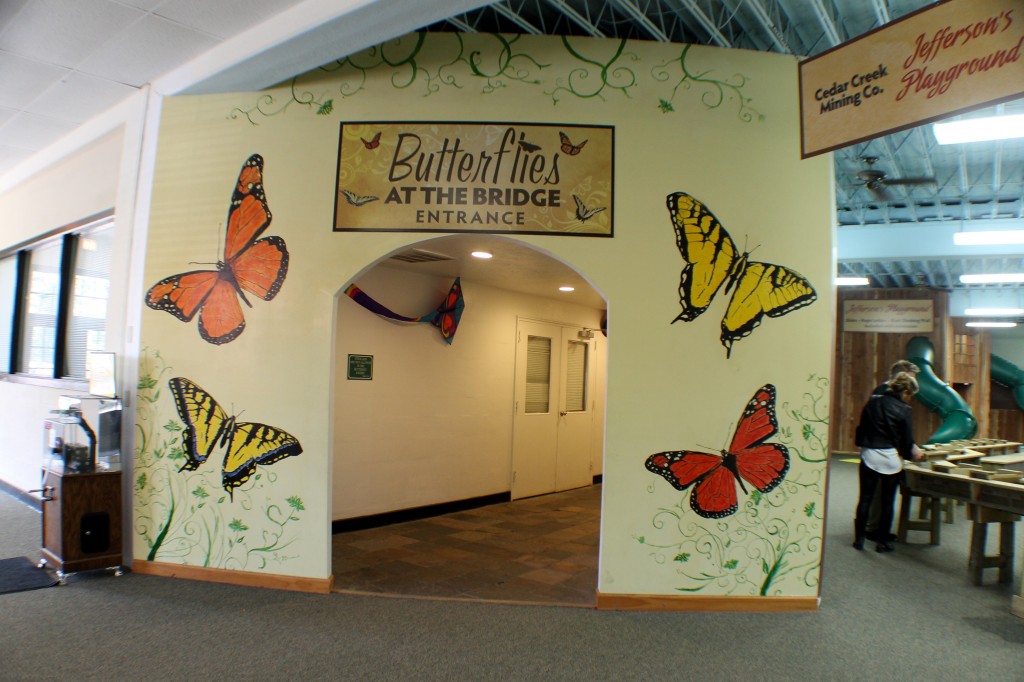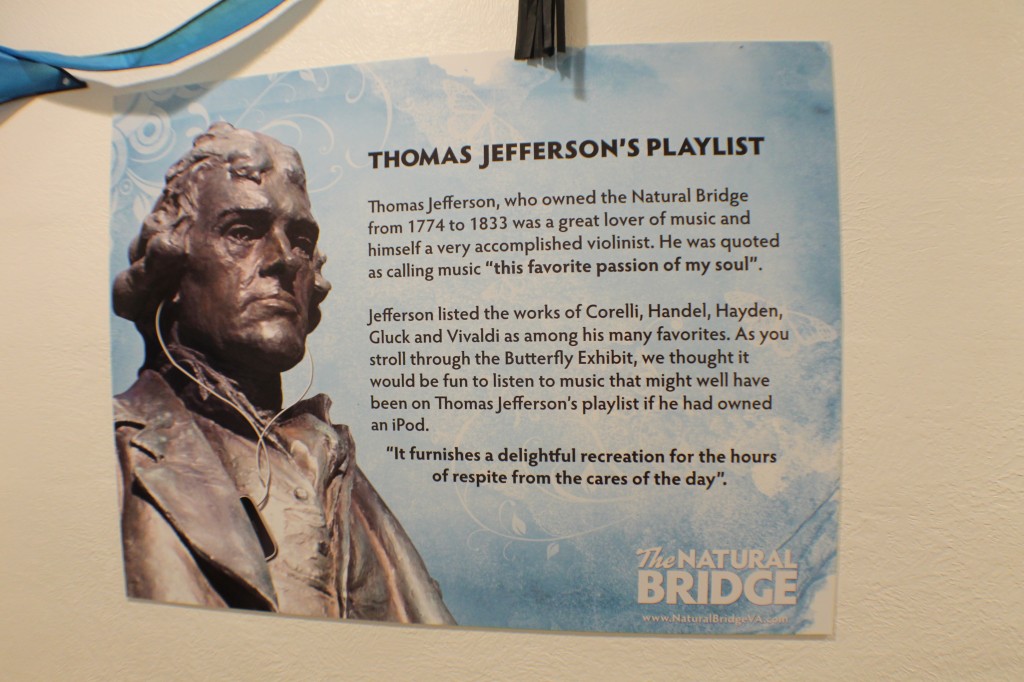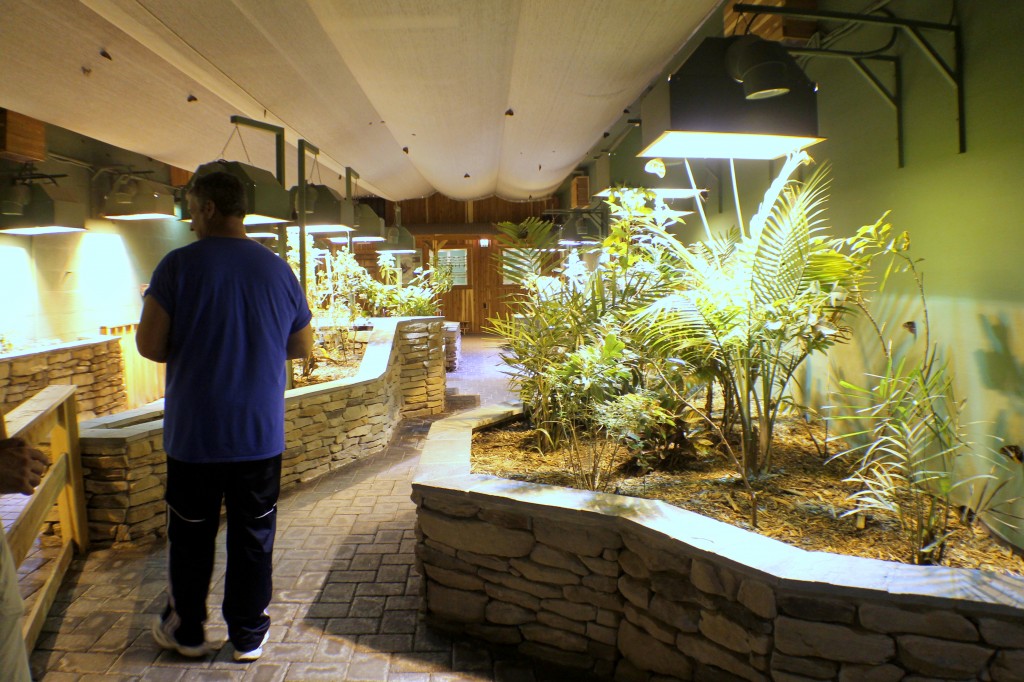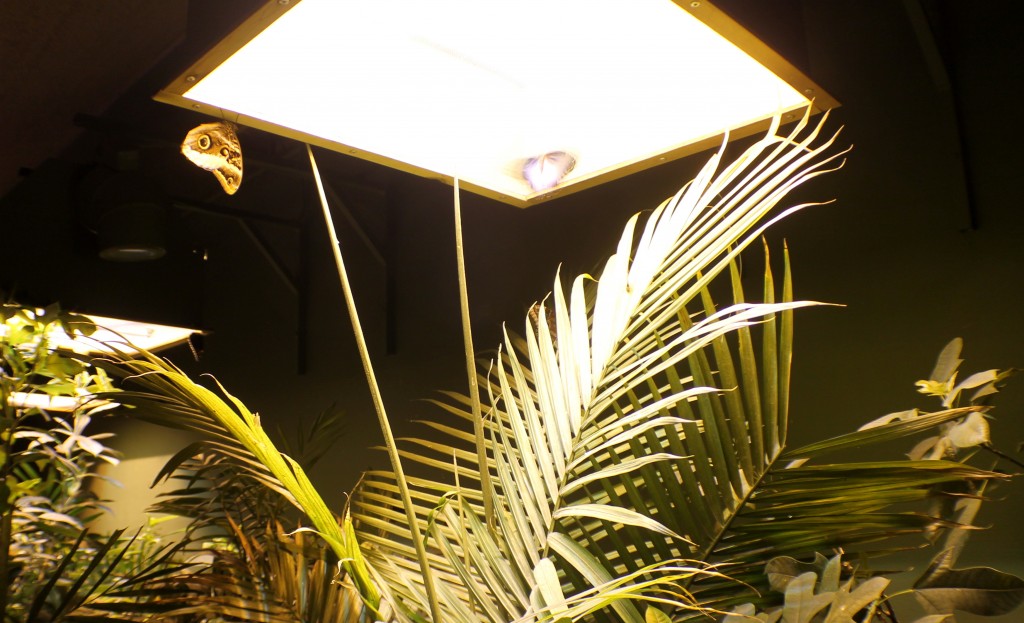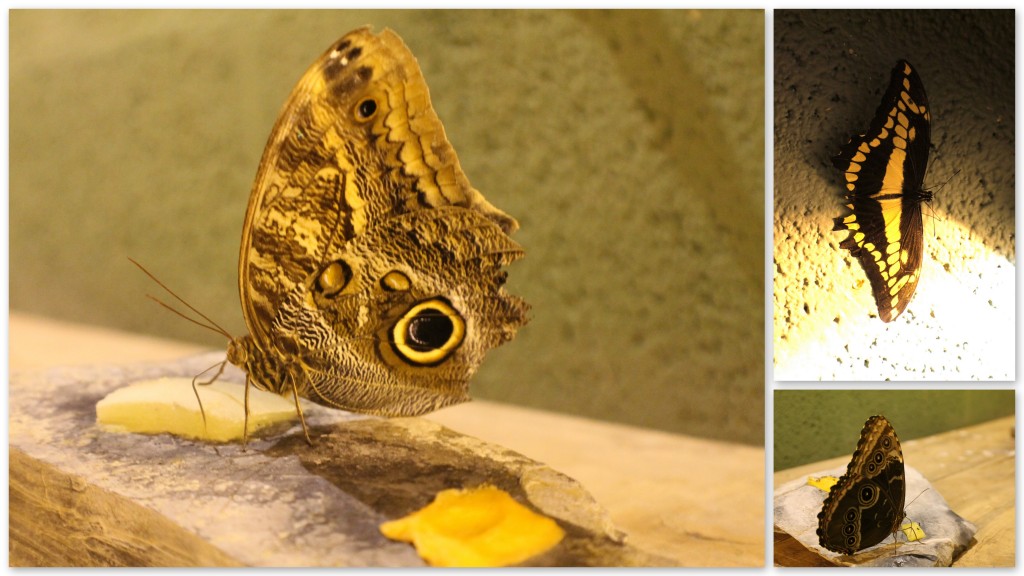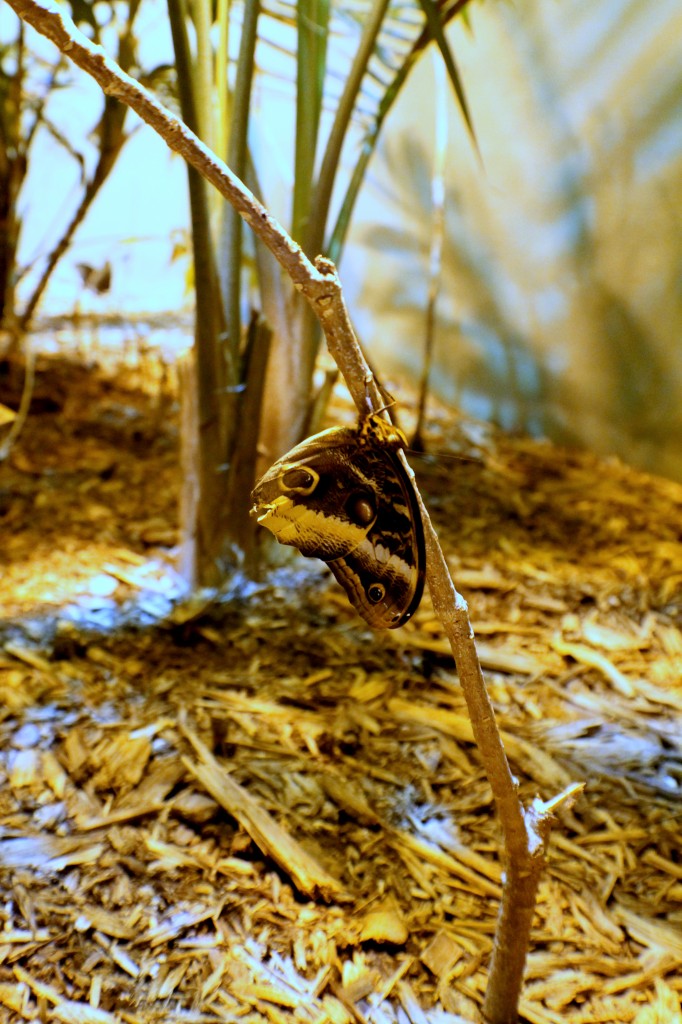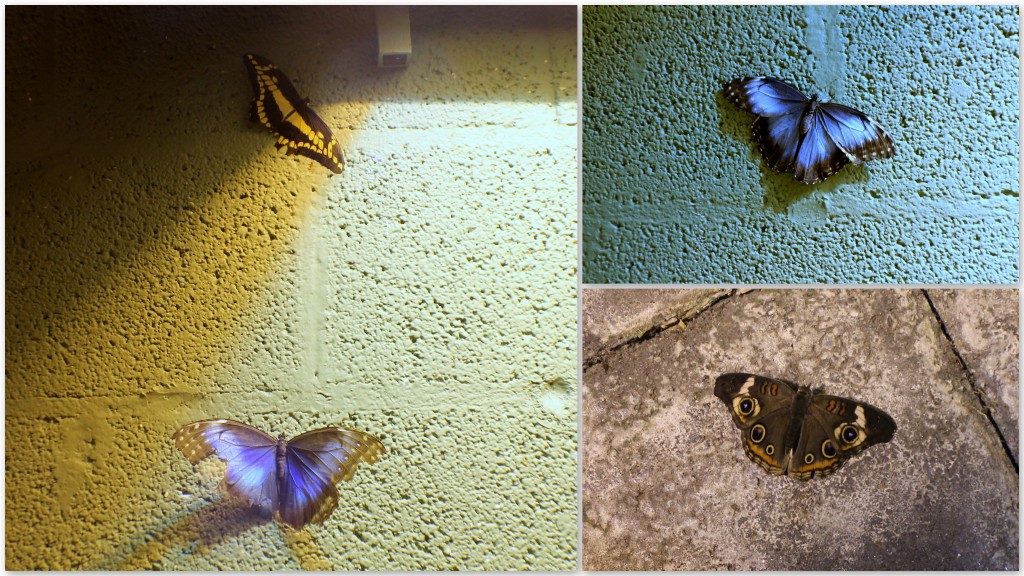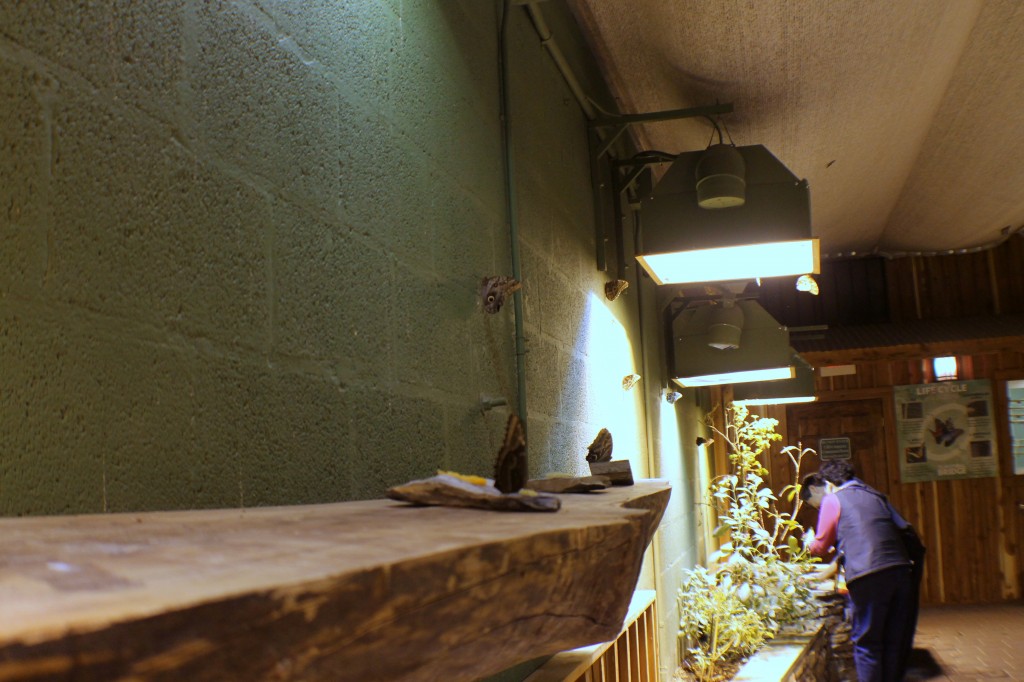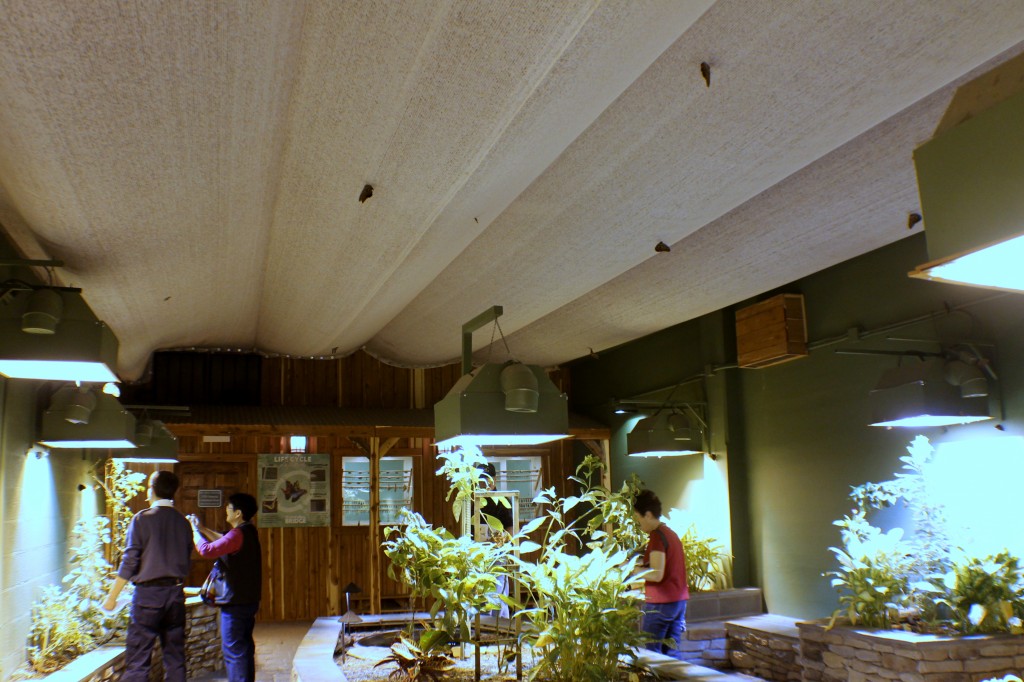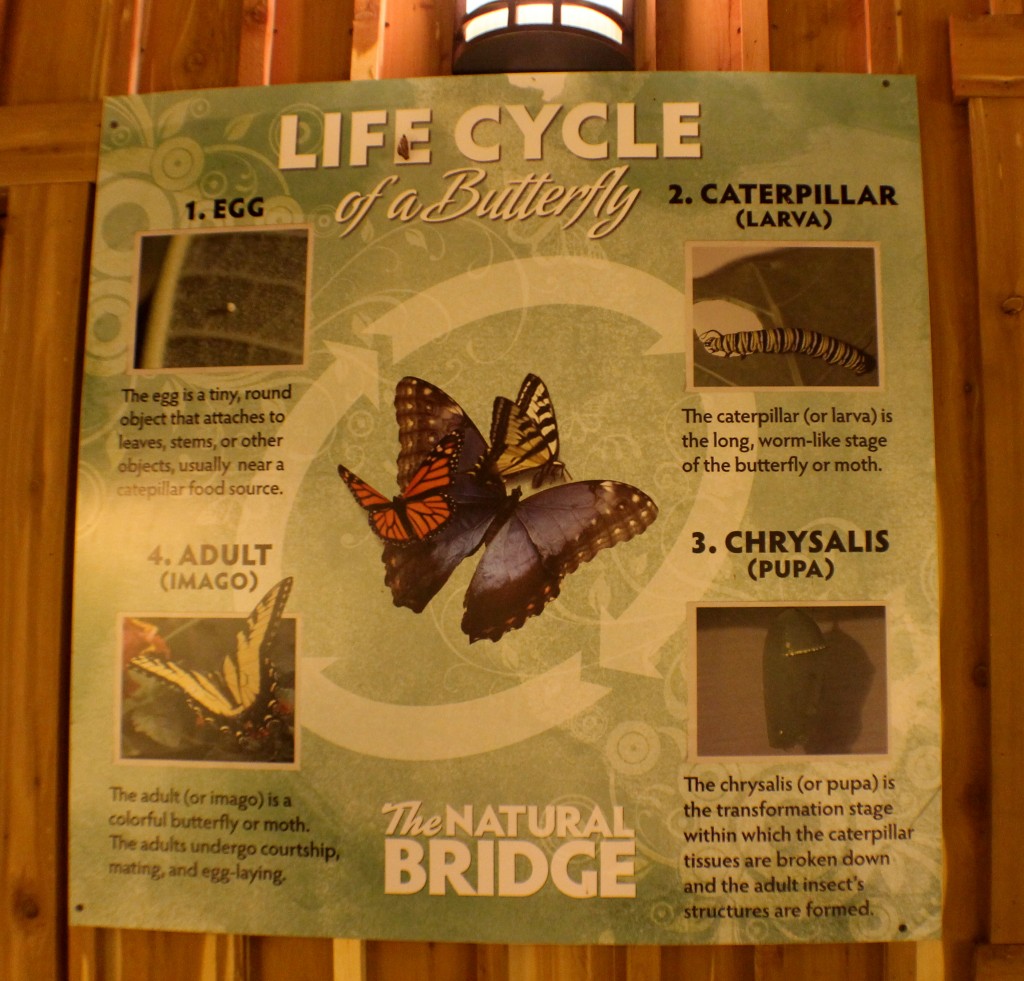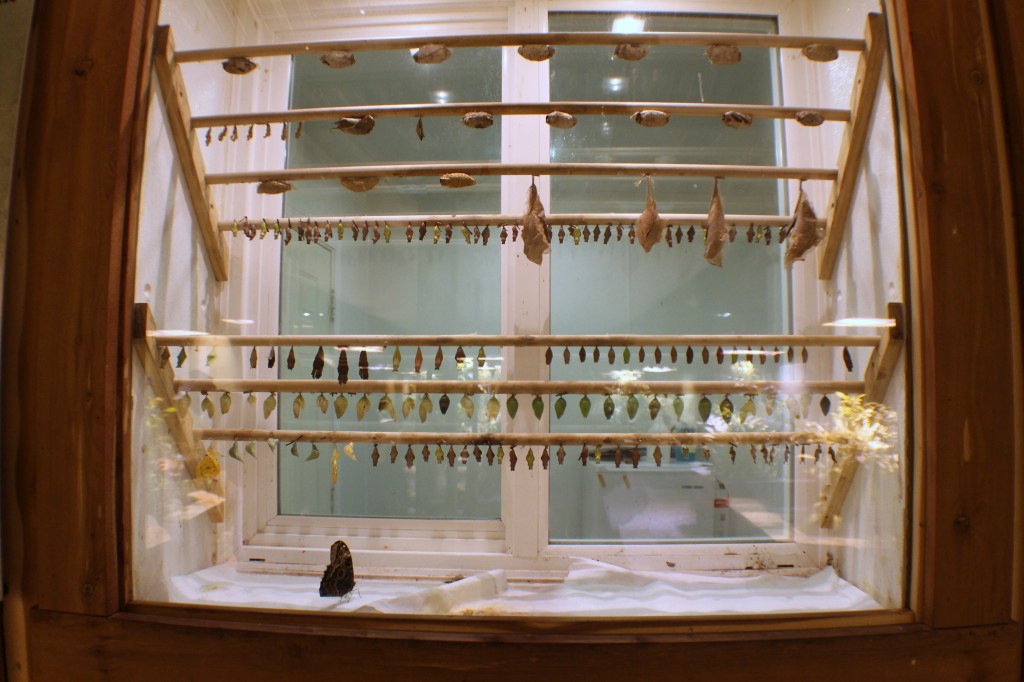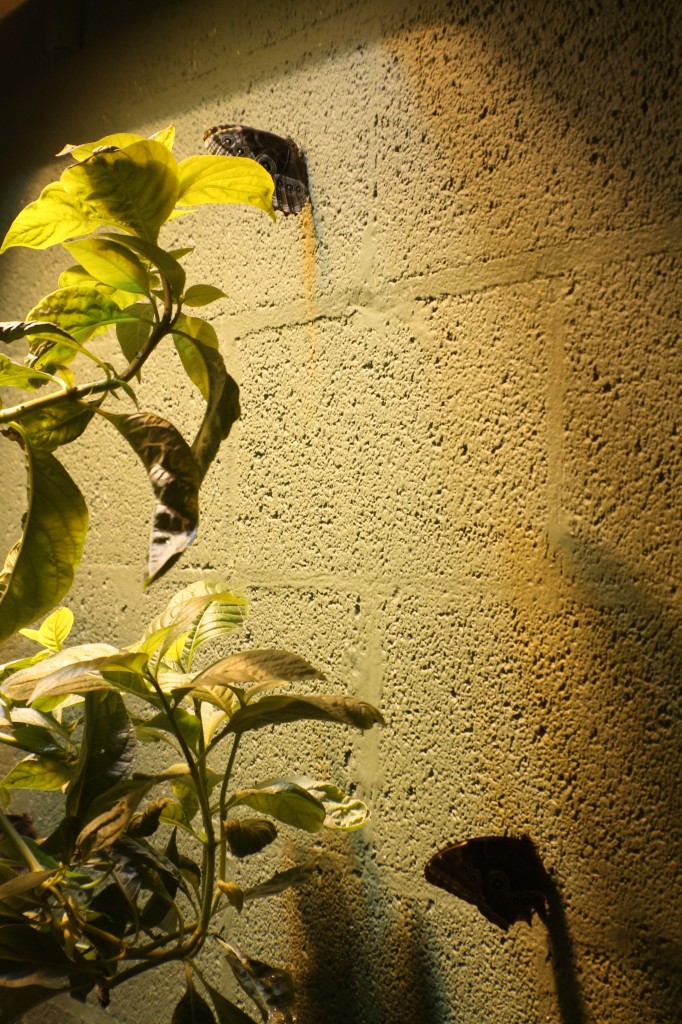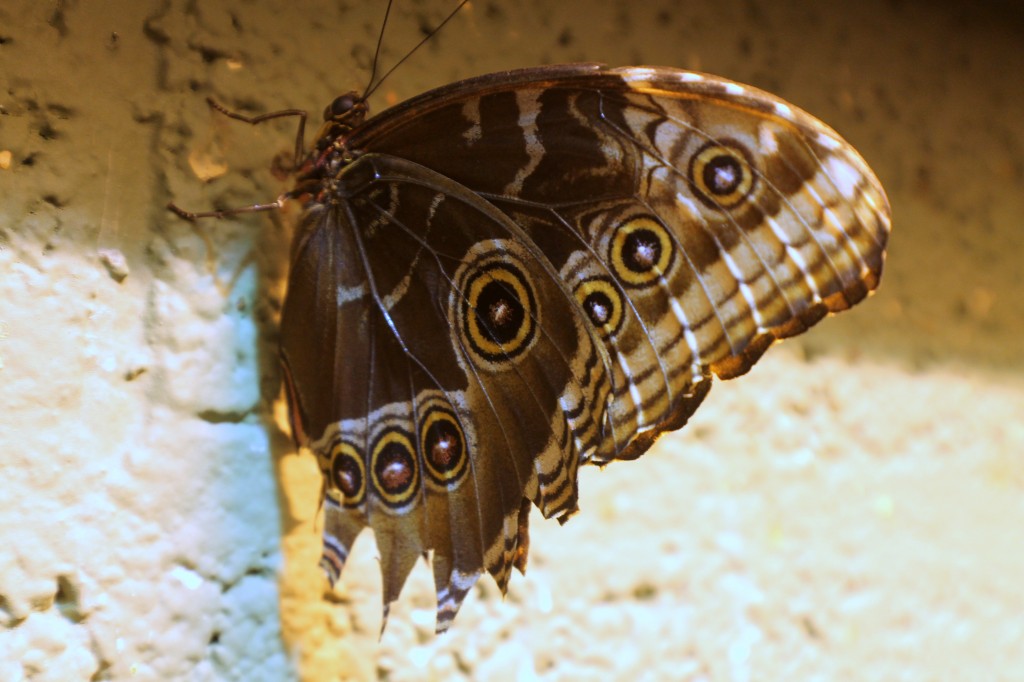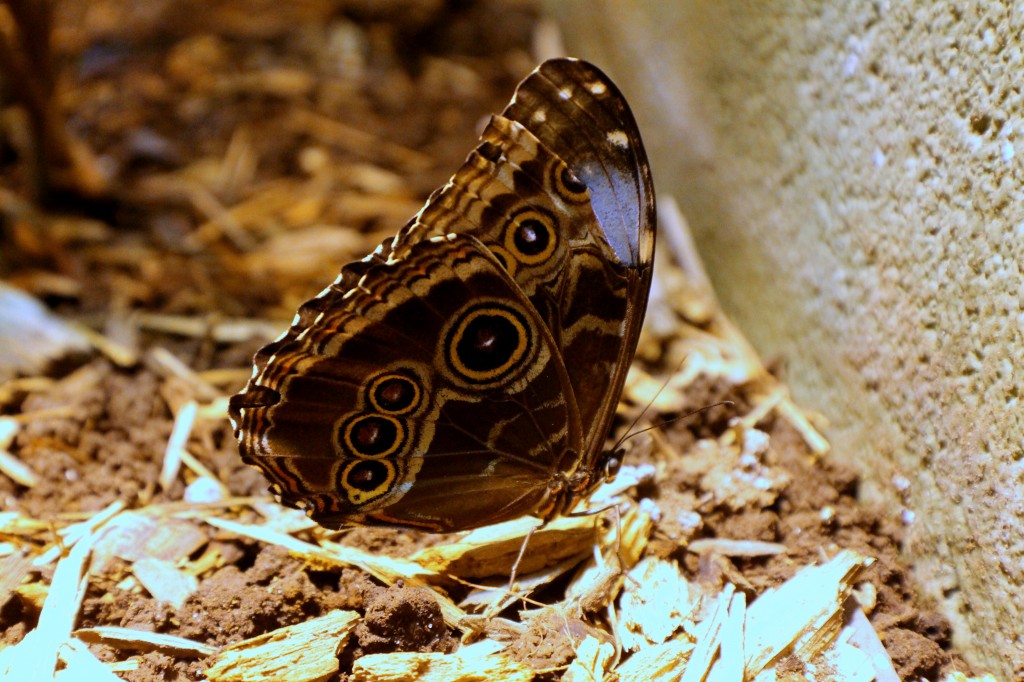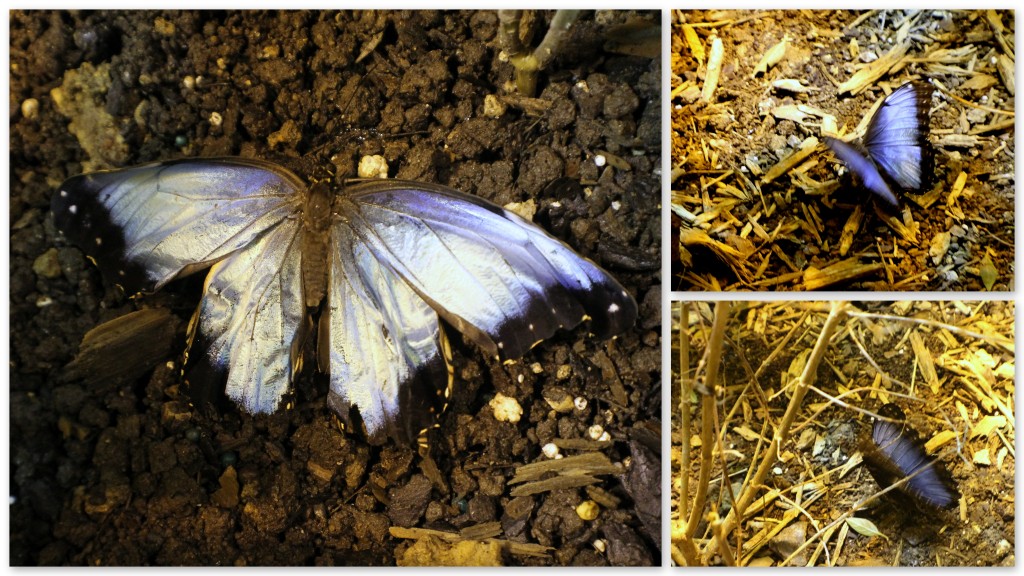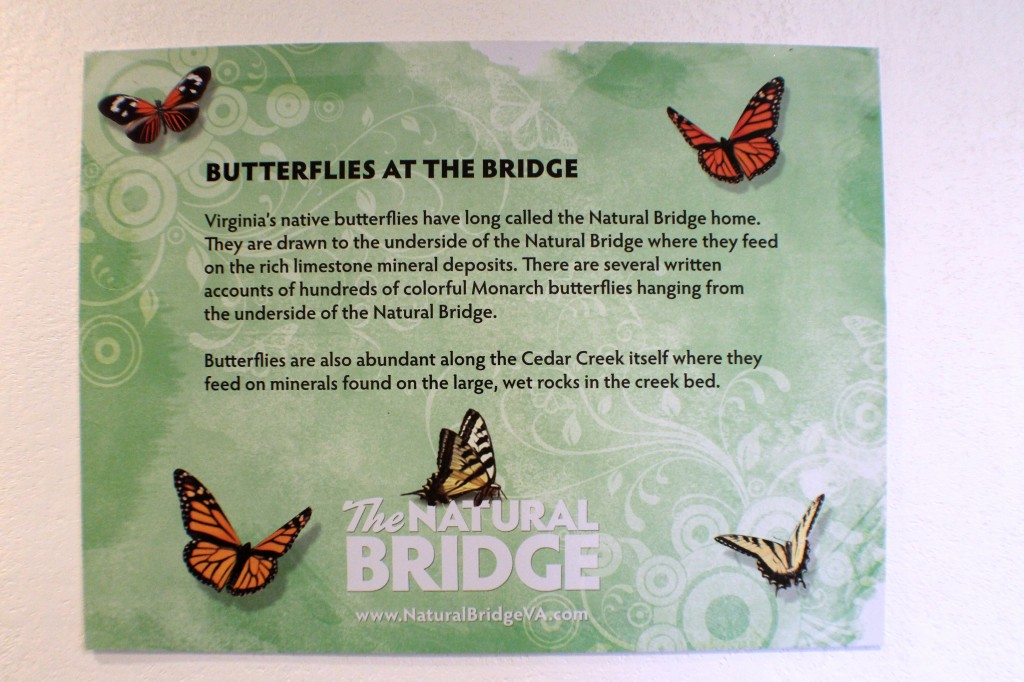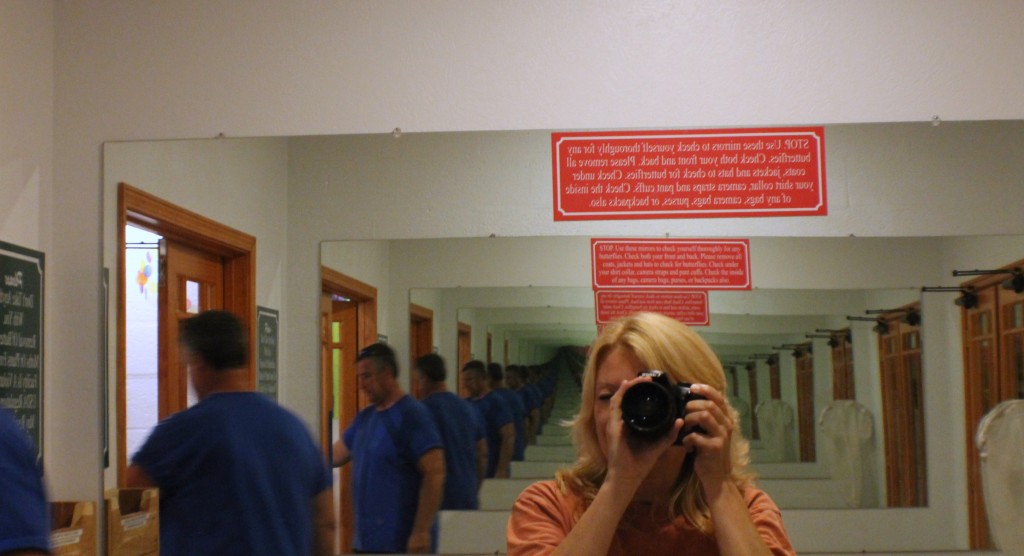Surprisingly, there are many attractions at The Natural Bridge. Dave and I visited the Butterflies at the Bridge attraction while we were walking down to The Natural Bridge. This is fairly small, but very cute indoor garden of beautiful butterflies from around the world and our own backyard.
Visitors have an opportunity to see hundreds of these amazing creatures in flight, as well as in multiple developmental stages, all set among tropical plants in this unique indoor garden. There is no comparison with the Butterfly Pavilion at Xcaret here, but this is a neat place to visit.
An interesting note about Thomas Jefferson’s playlist is on the wall by the indoor butterfly garden entrance.
The Natural Bridge has had a long, harmonious relationship with butterflies. Guests see these beautiful creatures daily in their natural habitat along the Cedar Creek Nature Trail leading to the Natural Bridge, and now in this new exhibit designed to showcase their natural beauty.
Besides nectar in the trailside flowers, butterflies feed on the minerals abundant in the creek’s shallow streambed and on its large wet rocks. At Cascade and Lace Falls, and along the wall of the Natural Bridge, they find potassium nitrates in the damp limestone. Take a look at the ceiling, many butteflies are there.
Fun things to know about butterflies:
-
Many butterflies taste with their feet
- Butterflies are (almost) everywhere. Antarctica is the only continent on which no butterflies or moths have ever been found.
- The top butterfly speed, without the aid of wind, is 12 miles an hour. Some moths can fly 25 miles per hour.
- Butterflies can see red, green and yellow.
- A butterfly cannot fly if its body temperature is less than 86 degrees.
- Representations of butterflies have been found in Egyptian artwork that is more than 3,500 years old.
- A butterfly’s wings are covered with thousands of tiny overlapping scales.
- A group of butterflies is referred to as a “flutter”.
We could see butterflies everywhwere there: on the walls, on the ceiling and on the floor. The guide asked us to watch the floor for the butterflies in order not to accidentally step on any of them.
There are so many beautiful butterflies in their natural setting!
Guests can learn about the butterfly life cycle and all of the butterfly stages through metamorphosis to the magnificent finished creature at maturity.
Be sure to check out the Virginia farmhouse facade on the back wall. This is where the emergent chambers are and where you can see the whole life cycle of the butterfly including when they emerge from the chrysalis or cocoon.
My favorite kind of butterfly is the Blue Morpho – beautiful blue butterflies like in the pictures below. Blue morphos live in the tropical forests of Latin America from Mexico to Colombia. Adults spend most of their time on the forest floor and in the lower shrubs and trees of the understory with their wings folded.
However, when looking for mates, the blue morpho will fly through all layers of the forest. Humans most commonly see morphos in clearings and along streams where their bright blue wings are most visible. The blue morpho’s entire lifespan lasts only 115 days, which means most of their time is spent eating and reproducing.
It seems like Monarch butterflies are the most popular at the Bridge.
The red sign at the exit of the butterfly exhibit warning: Stop. Use these mirrors to check yourself thoroughly for any butterflies. Check both your front and back. Please remove all coats, jackets and hats to check for butterflies. Check under your shirt collar, camera straps and pant cuffs. Check the inside of any bags, camera bags, purses, or backpacks also.
